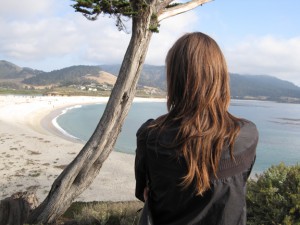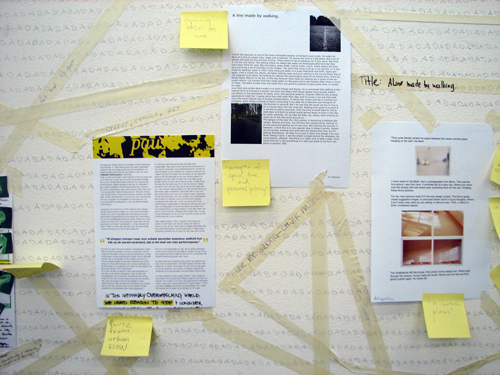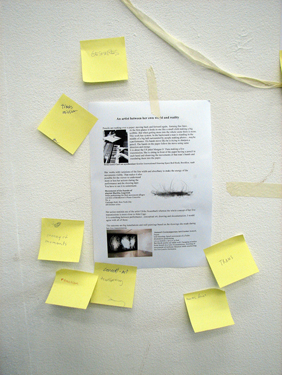To summarize the context I first must mention- with the freedom of a resident of here and today – the presence of pressure and calling out resent for (this interpretation of) passive living. With that, a near apocalyptic sort of set creation takes place. It receives emphatic caricatures, tragic responsibilities, gets greatly busy scenery’s to play on, and personally – I have a dislike for tricks in most cases. Not that I don’t care for the drama, it is the very reciprocal end, of paying respect to voices in letting them be exactly what they are.
In theory, slow design agrees with my thought. Carolyn F Strauss saw faults in the growing movements of green design, and overproduction of recycled/recyclable designs with wonky purposes – “We should be calling into question the need for the product in the first place.”. The economical success of key wording pollution, organic and related terminology grew and hasn’t reclined much since, the very idea of reducing production overproduced, and did so quickly.
What the slow movement suggested is a reduction with increased effort. The time needed for the process of manufacturing most things shortens exponentially to the cost – spiraling in recent event, time is money they say, slow designs agree differently. A pair of trousers whose material has circled the Earth several times even before being sewn together, has then been sent on a series of to a majority unknown routes before finally reaching y/our unimpressed hands – is replaced by a dazzling piece of phantom experience and craft, culture and tradition are now personal choices and flavors. As long as our story is near geographically, associatively or else, and beaded with time, it is what slow tells about in it’s forms.
In this sense, daily designs gain back their emotional and such weight in style and charm of a hand-made product, we make slow but noteworthy changes in ways of everyday consumption, directing the trend rightfully. So I see visions of Strauss, who founded SlowLab in 2003, as a vent for ideas of applied activism, designs and debates on this slow framework within a worldwide web of selected individuals, based in New York, US. Through series of lectures and projects we get an insight to a philosophy with few examples of artists making (todays) drastic choices in technicalities of work methods and building new or bringing back old manufacturing principles, such as Judith van den Boom who’s taken the knowledgeable Chinese porcelain worker out of the factory into a small and personal area for working, learning and collaborative design. Focus frequently falls on ideas, and magnify a personalization – in form a sustainability factor – of objects, an illusion of a caring presence is cast to put the viewer into romanticized relationships with his toys. We wait for your mail accordingly through a programmed lens of another rational design, listen to amplified cooking sounds while reaping scents of it’s making, in a sort of disposable but pleasant and seedful event. Reflective research fruits a wearable face of inevitable and looked-over slow processes, not the first of SlowLab’s collaboration with former or present Rietveld students . It peeks a little outside the umbrella of the boldly tagged holistic promise, and resorts often to mid-flight concepts in elaborate captions, with it’s patterning accents on context and sacrificial imagery of more or less extreme discomfort as a crime against nature.

I have a hard time agreeing on sets of carved rules, and think one should be as careful and discrete with evoking guilt in other beings as can be. Moral justification does not make (good) artistic experience good, neither does over politeness. But we can make a lot of solid exceptions for this in design, and the power of suggestion in a possible event differs from an artists dense sensation to be experienced attentively, also not to be overlooked is the responsibility of a designer of largely produced goods, and creator of appliances to be sent randomly into living and often outlive it’s maker. What I miss is a striking moment, like the gasp for air after having or witnessing a brilliant idea, otherwise I feel I might be convinced, perhaps this is the way of having framework. A sharp, clear thought, strong visual motor, an undirected balance that leads to somewhere like this. Maybe it is too ideological to expect of pieces a mapped idea with limited or no description, this sort of modulation seems crucial though, and a set of produces that need not much or any sugarcoating. I think the slow designers, and all artists concerned with environmental damage a cruelly run contemporary life allows, should take the green trend as a mean to challenge their own work, and distinct themselves in opportunist waters by finding strong subtleties for use in triggering thoughts rather than speaking them into a bore. We see the blueprint in our every day life already, respond to it most strongly when the message comes on it’s own, and we all have many factors afloat – a suggestive shooter like this is surrounded by comfy amounts of room for exploring abstraction and rock and roll, yet it stays easy. What I try to say is – we should be raising awareness by raising awareness levels, and sway to an old fashioned need to please and show (off) our very best, even if it means falling outside the fixed frame of your politically correct ideology – at least, we will be left with a loud work to discuss, debate, come back to and so forth.
Carolyn F Strauss with SlowLab sends out promising goals and messages, and should have space enough to branch and develop a captivating and elegant design, which sends us to a slow but sweet relationship with the inanimate, and gradually teaches importance of lively touch.




